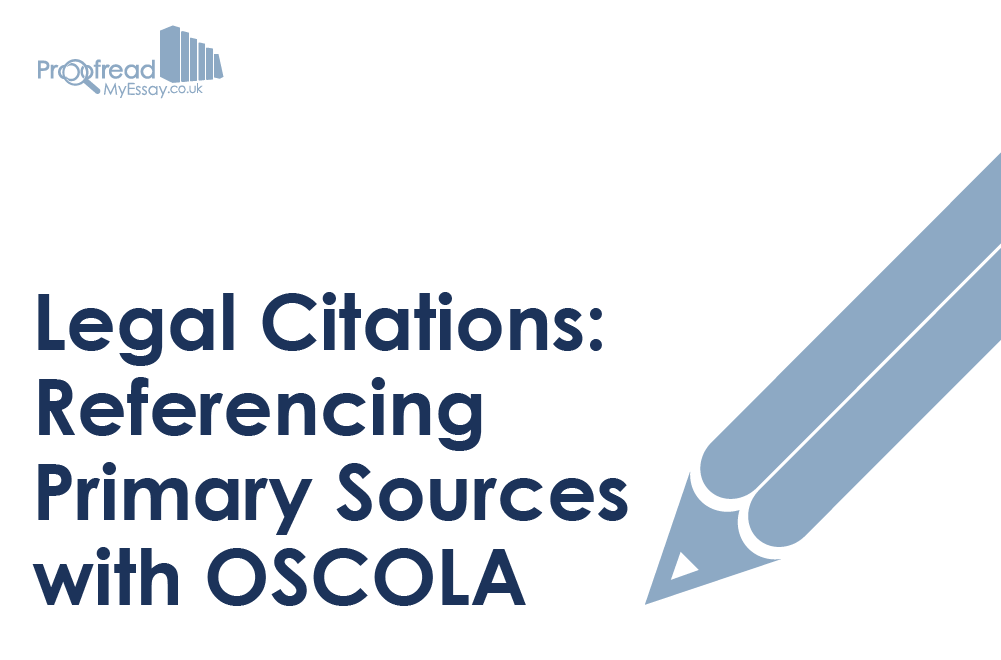Most countries have their own legal processes, so different regions tailor their legal citation systems accordingly. In the UK, the most common form of legal referencing is OSCOLA (or the Oxford Standard for Citation of Legal Authorities). In this post, then, we’ll look at how to cite primary sources in OSCOLA referencing. First, though, what is a primary source?
Primary and Secondary Sources
OSCOLA refers to sources as either ‘primary’ or ‘secondary’. Primary sources are legal sources, such as cases and legislative documents. Secondary sources are everything else, including books, journal articles and websites.
Both source types use superscript numbers (e.g. 1, 2, 3) in the text to indicate a citation, with details of the source given in a footnote. In this post, we set out the basics for citing primary sources using OSCOLA.
Cases
When citing a UK case with a neutral citation, the footnote should include:
Case Name|[Year]|Court|Number,|[Year]|Volume|Report Abbreviation|First Page.
It’s only necessary to include the case name in the footnote when it is not named in the text. Moreover, the number of the neutral citation is separated from the law report citation by a comma.
Cases from before 2001 will not have a neutral citation, so footnotes for older cases should only include the following:
Case Name|[Year]|Volume|Report Abbreviation|First Page|(Court).
Examples of the above would appear as follows:
Neutral Citation: PI vs Walls [2008] UKHL 15, [2008] 4 AC 1284.
No Neutral Citation: GM vs Nissan [1983] 1 AC 154 (UKHL).
Legislation
When citing a UK legislative act, all you need is the short title and year:
Act of Supremacy 1558.
To reference a section, moreover, add this information after the year:
Human Rights Act 1998 s 7.
The ‘s’ before the ‘7’ above is short for ‘section’. However, the correct abbreviation here may depend on what you’re citing:
|
part/parts |
pt/pts |
|
section/sections |
s/ss |
|
subsection/subsections |
sub-s/sub-ss |
|
paragraph/paragraphs |
para/paras |
|
subparagraph/subparagraphs |
subpara/subparas |
|
schedule/schedules |
sch/schs |
You may also need to cite a statutory instrument at some point. To do this, the footnote should include the title, year and the SI number (after a comma). So, for instance, we could cite a statutory instrument as follows:
Find this useful?
Subscribe to our newsletter and get writing tips from our editors straight to your inbox.
The Deregulation Act 2015 (Commencement No. 4) Order 2015, SI 2015 2074 (C. 130).
Table of Cases and Legislation
As well as footnote citations, you will need to list all primary sources in a bibliography at the end of your document. For primary sources, the general rules in an OSCOLA bibliography are:
- Provide full information for each source.
- Divide primary sources into a Table of Cases and a Table of Legislation (you may also want to separate acts of legislation from legislative instruments).
- Sort cases/acts into separate sections by jurisdiction (unless you have not cited many sources, in which case they can be combined).
- List sources within their categories alphabetically by case name/title.
- List secondary sources separately under the heading ‘Bibliography’.
This will make it easy for readers to find the various primary sources you have used in your work. And if you’d like someone to double check your referencing when you’ve finished writing, we’re always happy to help.
.
